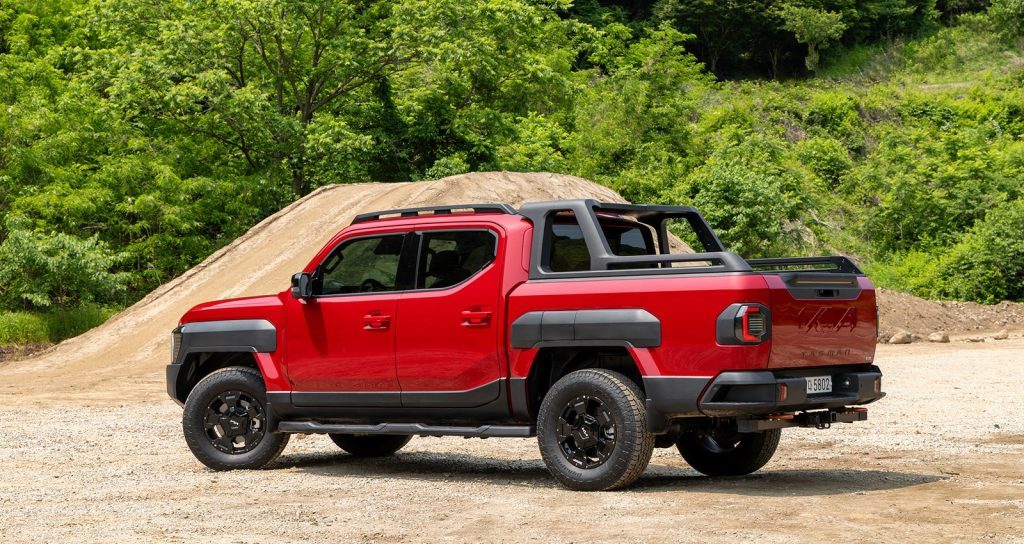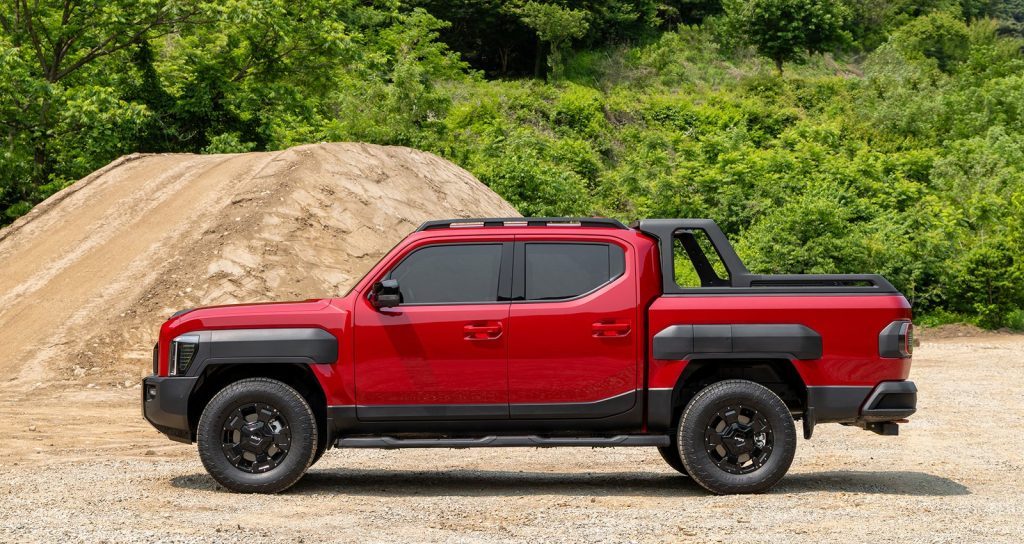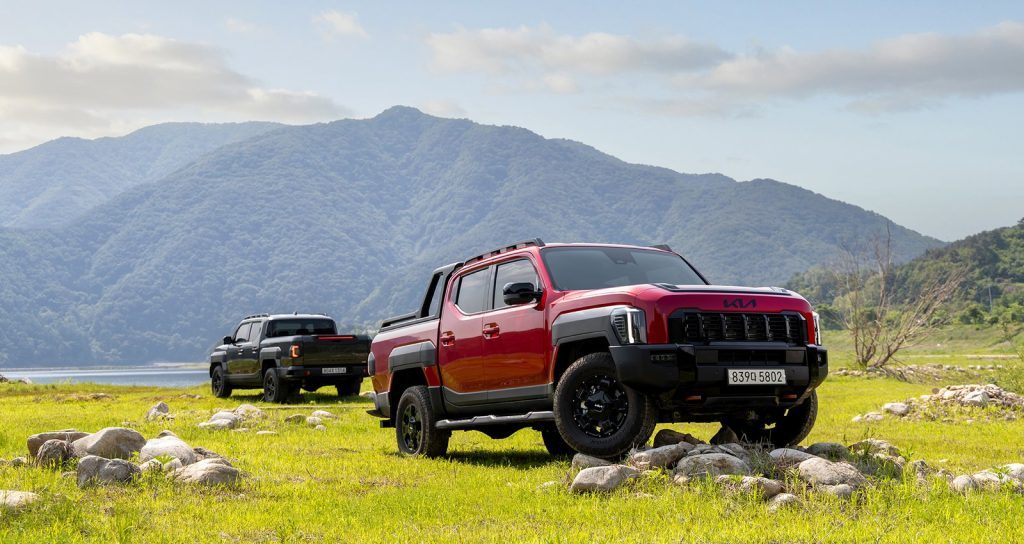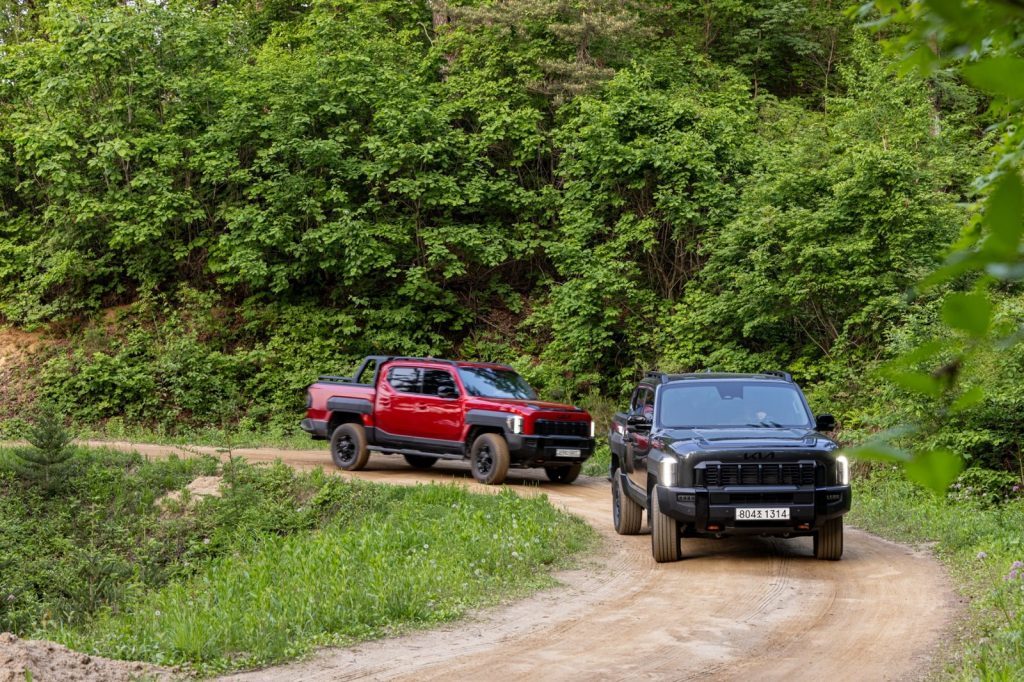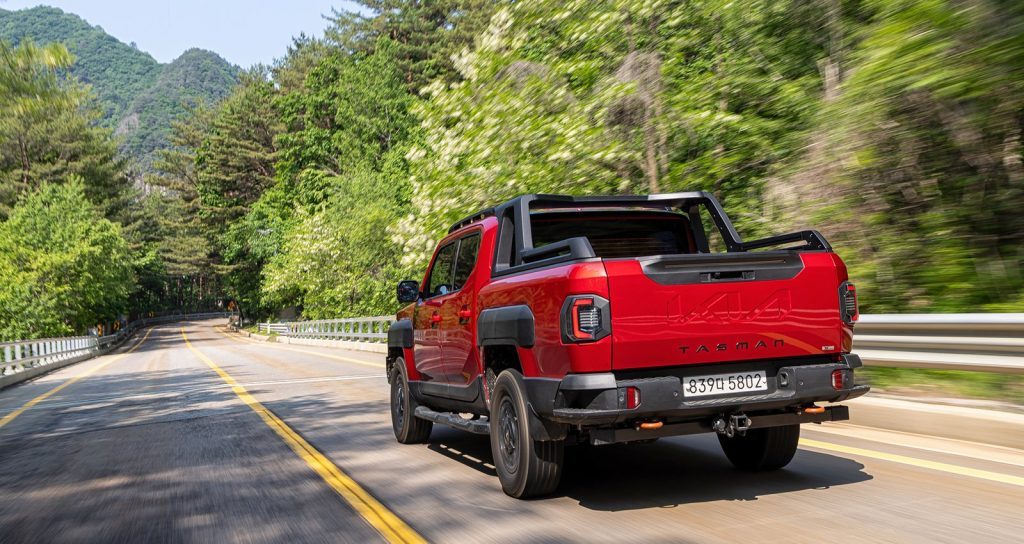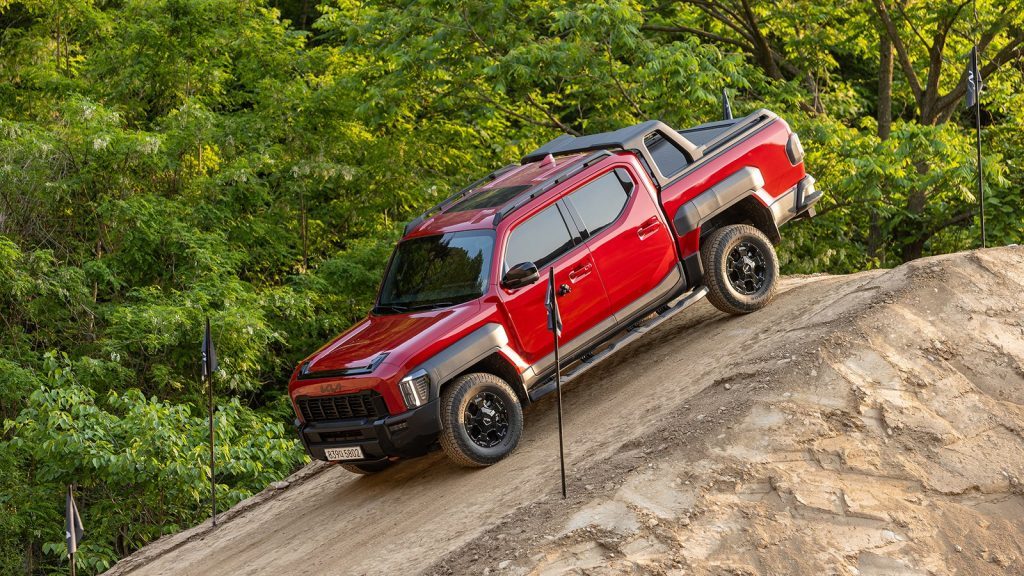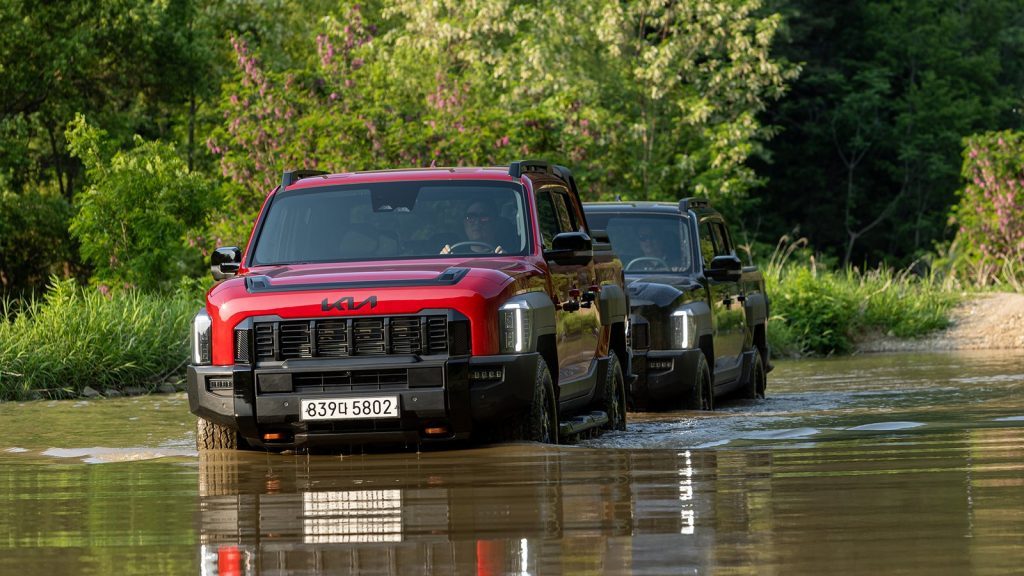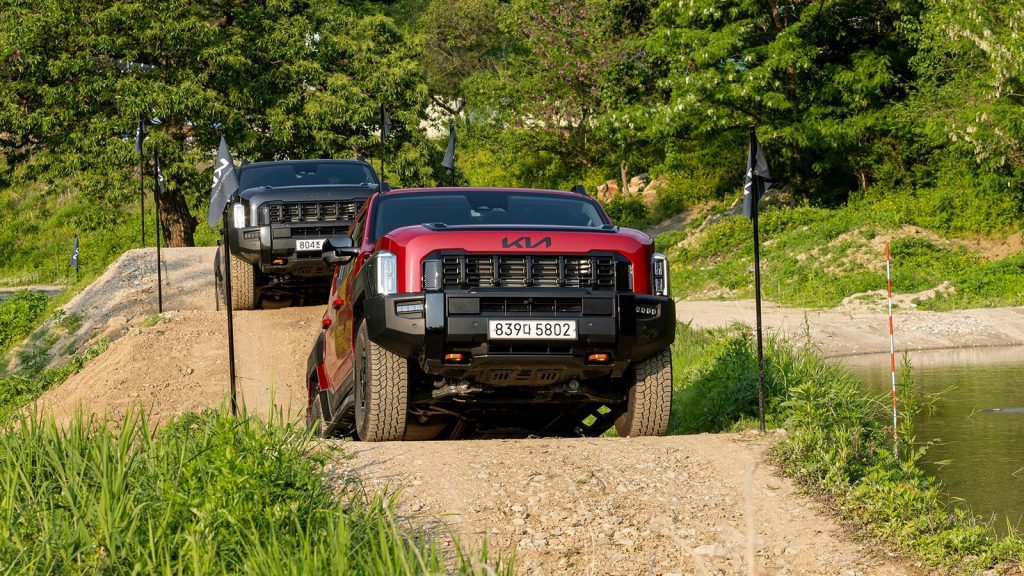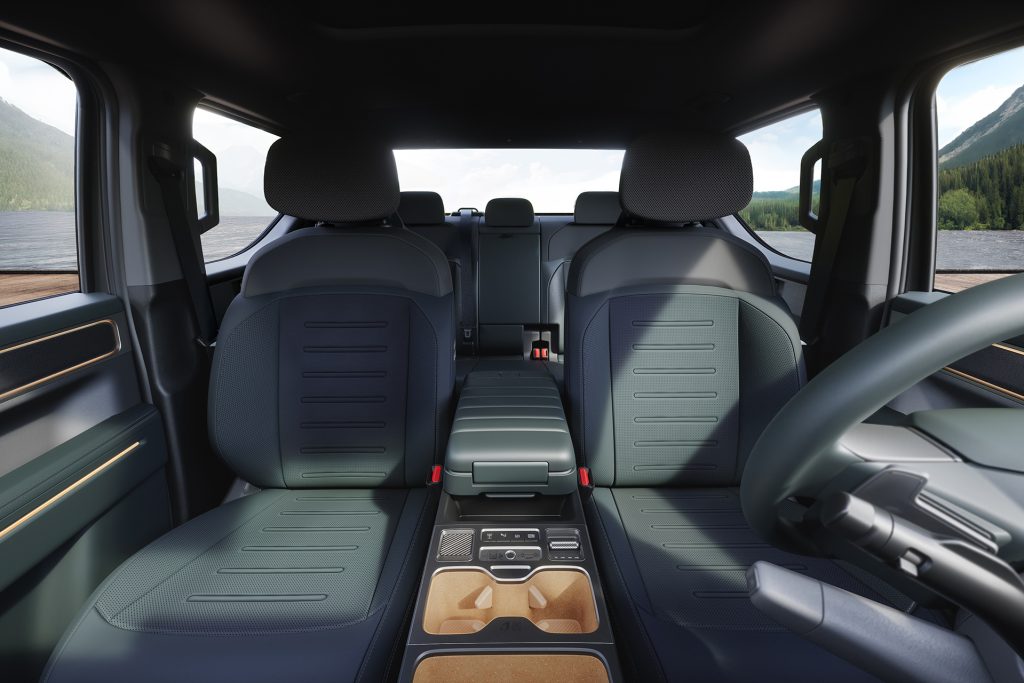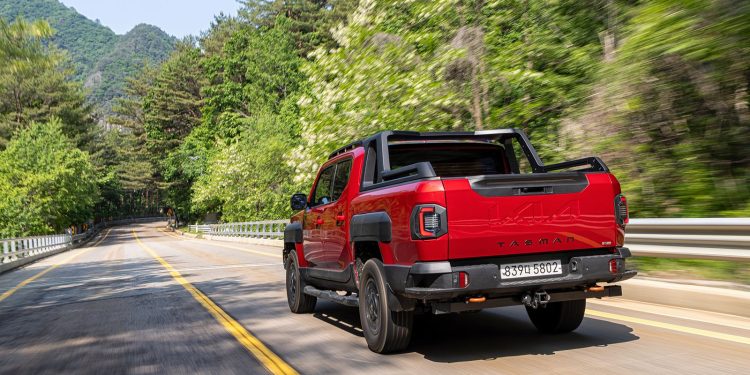Kia Tasman first drive: Ready for the rough stuff?
Kia has finally entered the ute game. And not with a half-baked attempt, either. The Tasman – built on a ladder-frame chassis, armed with a torquey diesel, and styled to stand out – arrives in New Zealand as a genuine contender in a fiercely competitive segment.
We travelled to Korea to drive the Tasman in preproduction form, and also got early seat time with a local-spec diesel prototype on New Zealand roads. The verdict? There’s a lot to like already, and even more to look forward to once local tuning is finalised.
Bold Looks, Real Utility
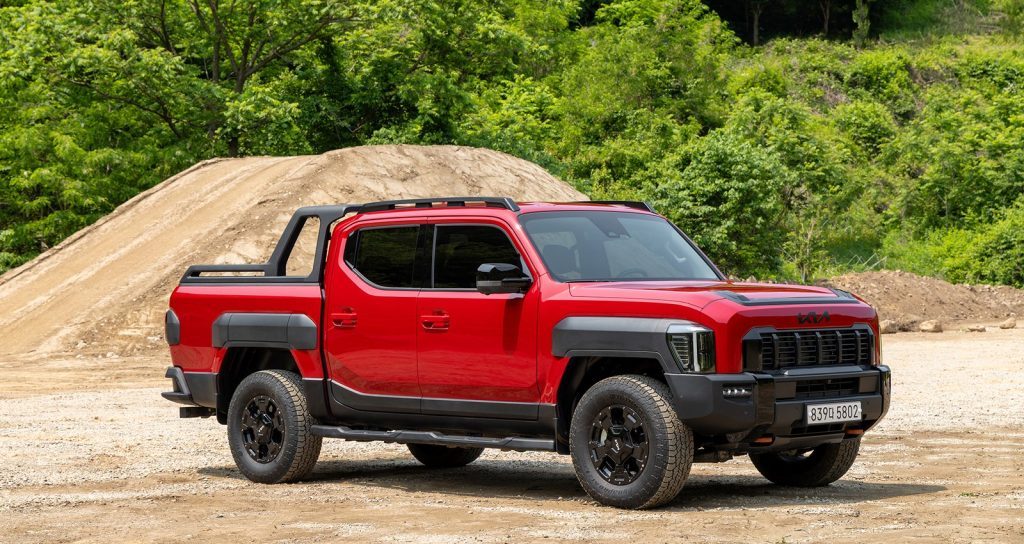
Let’s start with what you can’t miss: the styling. The Tasman’s looks have been a topic of debate online, but in person, the design comes together better than expected. There’s a distinctive upright nose with vertical LED lamps that wrap around the corners. Some have raised concerns about their placement in off-road scenarios, but they’re recessed behind a chunky black bumper that looks ready to take a knock.
High sides, squared-off cab lines, and chunky black body cladding give the Tasman a tough, purposeful look – especially in the darker shades. The X-Pro variant, in particular, turns heads with its all-terrain tyres and rugged exterior touches.
Around the back, there’s a deep-lined tray with factory tie-downs, integrated step corners, and an in-tray 220V power outlet delivering 200W. That’s enough to charge tools but not quite enough to run heavy gear like an EV’s V2L system. One clever addition: a small lockable storage cubby behind the right-hand rear wheel arch – perfect for muddy boots or a tow strap.
The tray itself is competitive in size and function. In the TX, TXR, and TXS variants, the tray measures 1573mm long, 1600mm wide, and 543mm deep, offering a volume of 1212L. In the X-Line and X-Pro, the tray is slightly shorter and narrower at 1512mm long and 1157mm wide, with a volume of 1173L. All variants feature multiple tie-down points, including in-tray rails and corner hooks, providing flexibility for securing loads.
Big on Practicality
Size-wise, the Tasman is a full-size ute. Measuring 5.4 metres long and nearly 1.9 metres wide, it goes toe-to-toe with segment staples like the Ford Ranger and Toyota Hilux. Payload capacity peaks at just over 1,025kg, while all variants offer a 3,500kg braked towing capacity.
Kia’s accessory range is also extensive, with options including snorkels, electric roller covers, roof racks, and load slides. No doubt the aftermarket will be jumping in too. You can tell thought has been put in for add ons, for example the roof rails have been rated for a hefty 100kg.
A Proper Cabin, Finally
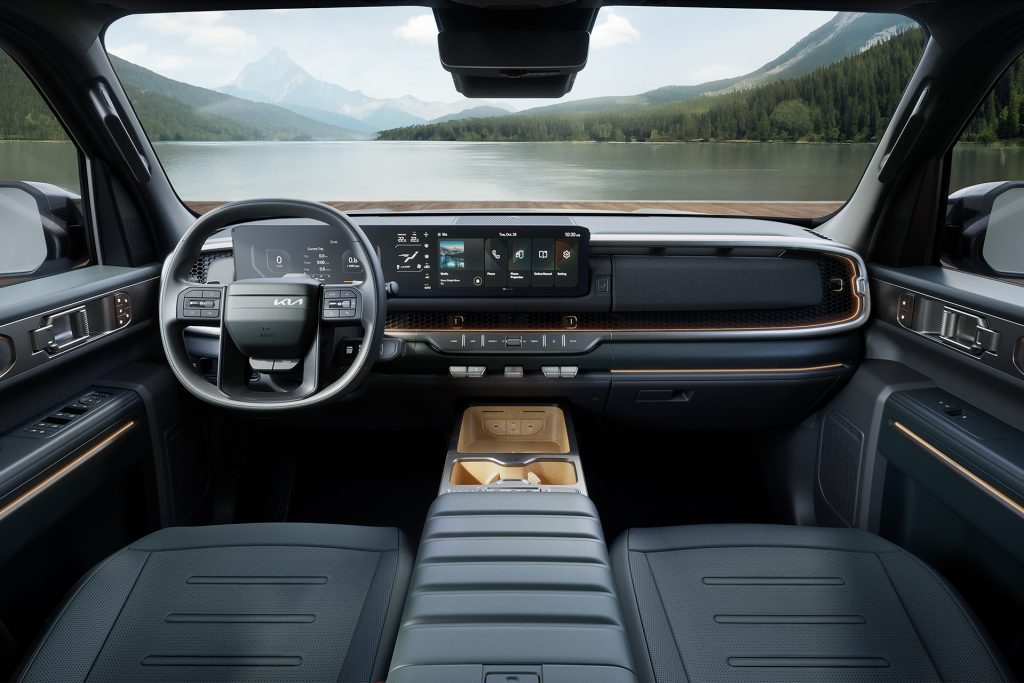
Step inside, and this is where Kia sets a new benchmark for the segment. The Tasman’s interior doesn’t feel like it belongs in a workhorse. Instead, it borrows heavily from Kia’s SUV playbook, particularly in the X-Line and X-Pro trims.
For those – like me – that thought the BYD Shark was a step forward for ute interiors, be prepared to be shocked. This is, without question, the best interior in the ute segment. It’s not even close. The materials, layout, screen integration, and features are more akin to a luxury SUV than a light commercial vehicle.
Like other Kias, the panoramic display houses dual 12.3-inch screens: one for the instrument cluster, the other for infotainment. Kia’s interface is responsive, and physical shortcut buttons remain below for climate and media functions – a relief in today’s touch-heavy world.
Seat materials and finishes vary by grade. Lower trims get cloth or composite leather, while the upper variants go all-in with ventilated and heated front seats, a heated steering wheel, premium Harman Kardon audio, and even a sunroof.
Perhaps the most surprising feature? Sliding and reclining rear seats in the X-Line and X-Pro – a first in the segment. These seats tilt back via a clever mechanism that moves the base forward, increasing comfort without sacrificing cabin space. It’s a small but meaningful touch, especially for families using the rear row on longer trips.
Rear-seat flexibility is also excellent. The base cushions flip up and lock in place, freeing up a huge floor space for tools, gear, or groceries. Hidden trays under the seat bases keep smaller items stowed away neatly.
Powertrain and Pricing
All New Zealand-bound Tasmans are powered by a 2.2-litre four-cylinder turbo diesel making 154kW and 440Nm. It’s paired to an eight-speed automatic transmission that’s been recalibrated specifically for ute duty. The transmission is one of the Tasman’s strengths, providing crisp, intelligent shifts in a range of driving scenarios.
There are five trim levels, all with 4WD and a double cab bodystyle at launch:
| Model | Price (NZD, +ORC) |
|---|---|
| TX 4WD | $52,690 |
| TXR 4WD | $58,690 |
| TXS 4WD | $62,690 |
| X-Line 4WD | $69,690 |
| X-Pro 4WD | $79,690 |
A single cab chassis and a double cab chassis variant will join the lineup in early 2026. For now, all five models land in Q3 2025 with comprehensive spec lists. Even base models get LED headlights, a trailer brake controller, and terrain mode selection.
From the TXR up, you gain extras like 18-inch alloys, dual 240V outlets, mood lighting, and wireless phone charging. The TXS and above bring a surround view monitor, heated seats, second-row slide and recline, and upgraded upholstery. X-Line and X-Pro models add an electromechanical rear diff lock, underbody protection, and enhanced off-road software, including a ground view camera.
Kia Connect – the brand’s remote services and OTA update system – is included free for five years across the range.
On the Road (and Off It)
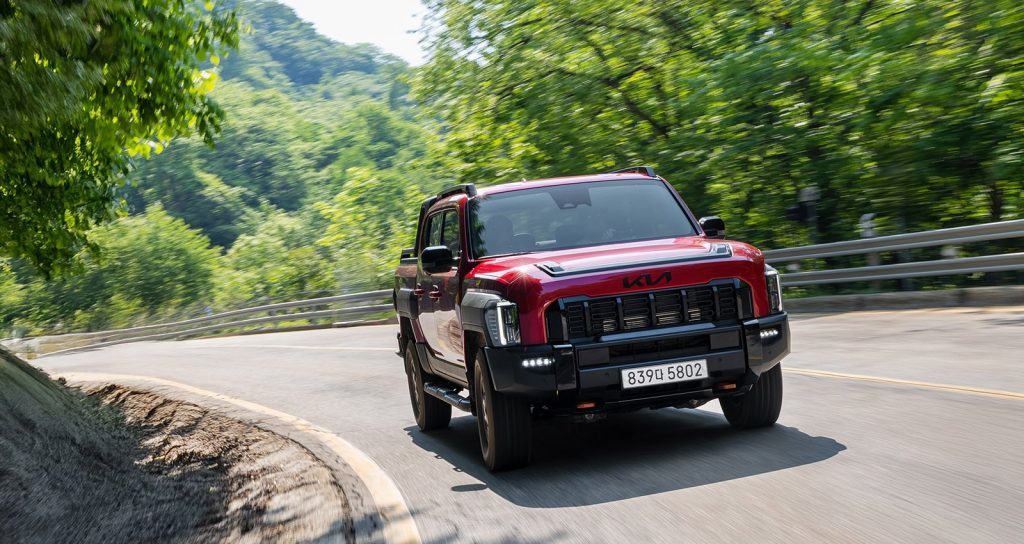
In Korea, we tested the petrol model with 206kW and 422Nm – a powertrain not destined for New Zealand. That engine felt strong and refined, but even more impressive was how well the eight-speed handled the delivery. There’s little lag, and the gearbox stays in the sweet spot without hunting unnecessarily.
Ride quality on Korea’s smooth highways was polished, quiet, and controlled – a promising preview, though not the whole story.
On New Zealand roads, we sampled the diesel in preproduction form. That same eight-speed transmission remains a highlight, working well to deliver mid-range torque and clean shifts. Kia has done a good job isolating diesel noise and vibration too – it never clatters, and the cabin remains calm under acceleration.
However, the unladen ride on local highways felt less composed than in Korea. Like many leaf-sprung utes, the Tasman can feel jittery at the rear when running empty. Kia is aware of this and has confirmed a specific Australasian ride and handling tune is underway ahead of launch. If it lands right, the Tasman could seriously challenge the benchmark set by the Ranger and Amarok.
Steering is light and consistent but not overly communicative. Kia has done well to isolate road shock, though that comes at the expense of some road feel. Still, for most ute buyers, comfort and predictability outweigh pure feedback.
Serious Off-Road Credentials
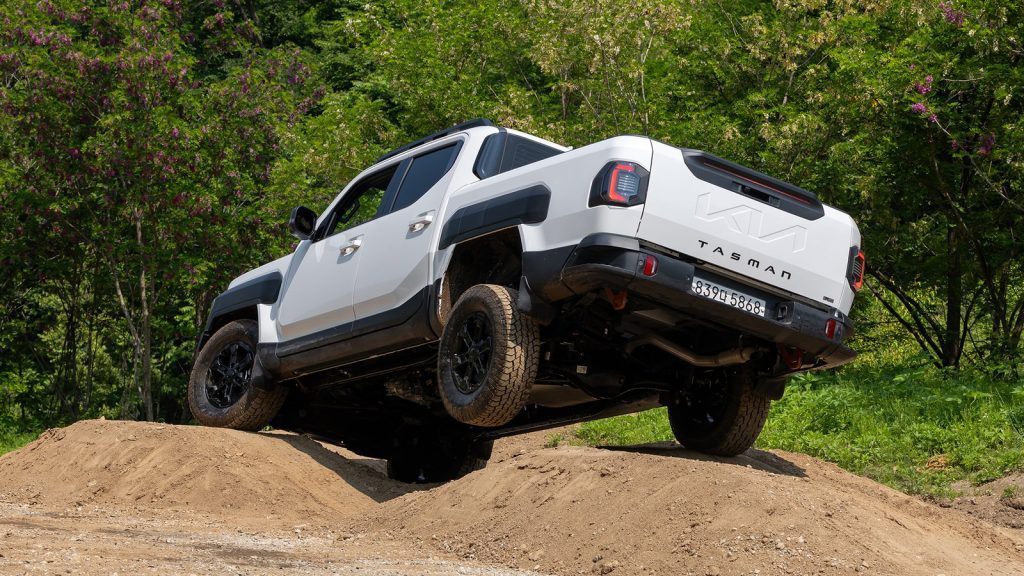
Off-road, the Tasman impressed. Ground clearance, wading depth, and traction systems are all up to spec. A rotary dial lets you toggle between 2H, 4H, 4A, and 4L – giving you full control over the drivetrain.
Kia’s off-road interface includes tyre pressure, pitch and roll monitoring, and a front-facing camera under the vehicle. There’s also a terrain mode selector for snow, mud, sand, and rock – depending on your 4WD setting.
One standout feature is the “X-Track” low-speed off-road cruise control system. It manages throttle and braking automatically at speeds up to 6km/h, allowing drivers to focus solely on steering. We tested X-Track on a prepared off-road course in Korea, where it performed confidently – and it’s the sort of feature that should shine in serious low-speed crawling back home.
Fully prepared
Kia might be late to the ute party, but they’ve shown up fully prepared. The Tasman brings fresh thinking to a well-trodden segment, combining genuine off-road ability with modern cabin comfort and standout tech.
Yes, the styling is divisive, and the unladen ride on local roads needs refining – but both are solvable. Once local suspension tuning is complete, the Tasman has every chance of sitting among the segment leaders.
